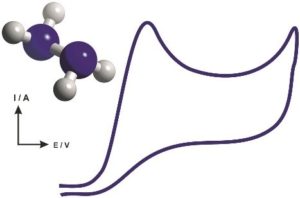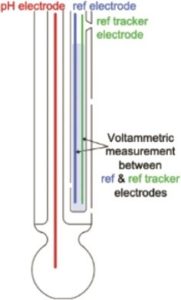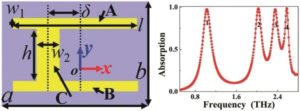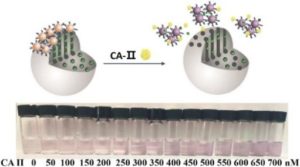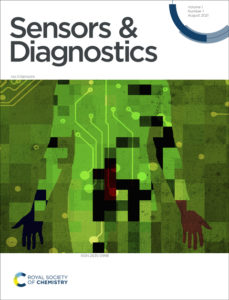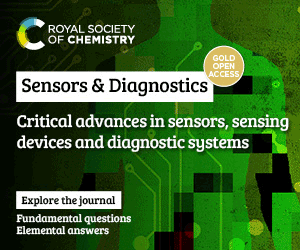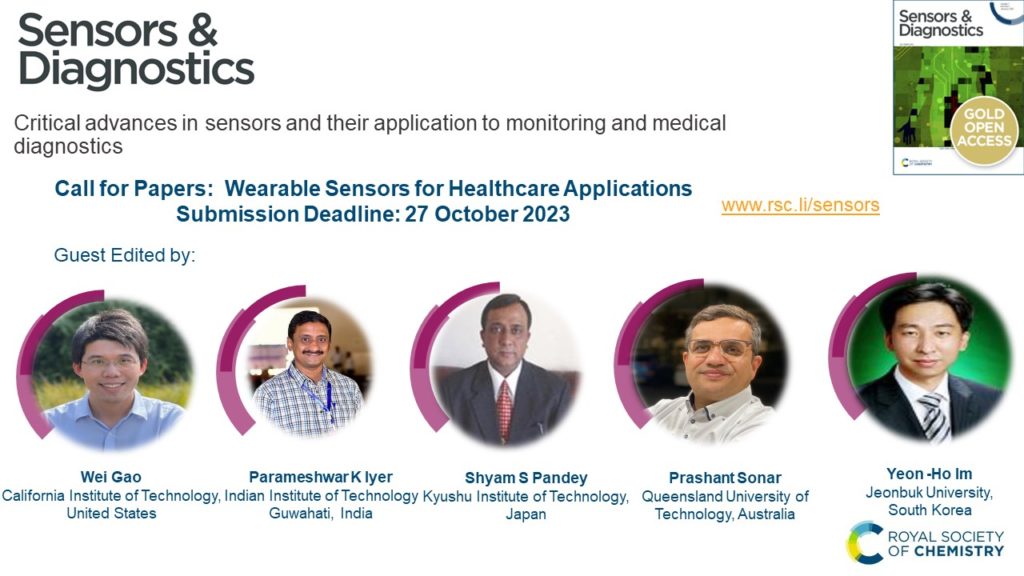
Sensors & Diagnostics is delighted to welcome papers for its latest themed collection on ‘Wearable Sensors for Healthcare Applications’, guest edited by Wei Gao (California Institute of Technology, United States); Parameswar K. Iyer (Indian Institute of Technology Guwahati, India); Shyam S. Pandey (Kyushu Institute of Technology, Japan); Prashant Sonar (Queensland University of Technology, Australia); and Yeon-Ho Im (Jeonbuk National University, South Korea).
The research area of sensors is progressing rapidly with notable developments in allied areas that have allowed sensors to be incorporated into fabrics or used as wearable gadgets and implants. Stretchable and flexible components are indispensable for wearable sensors. These components must be created or selected to have high mechanical strength and conform to human body motion. Additionally, a crucial requirement is biocompatibility, as the placement of the sensor on the skin should not trigger any allergies or discomfort. Although wearable biosensors are improving, more advancements in terms of selectivity, accuracy, and calibration are needed.
The objective of this themed collection is to publish high-quality research on the development and applications of different wearable sensors. We welcome primary research articles, reviews, and communications in this area of research.
The deadline for submissions is 27 October 2023. Submit your work to this collection now!
Promotion of the collection is scheduled for late-2023, with articles published online as soon as they’re accepted.
Articles can be submitted via our website: www.rsc.li/sensors. When submitting your manuscript, please mention that it is intended for this themed collection in the ‘notes to the editor’ box. The Editorial Office reserves the right to check suitability of submissions for both the journal and the scope of the collection, and inclusion of accepted articles in the final themed collection is not guaranteed.
Explore all open calls for papers from RSC journals!
About Sensors & Diagnostics
Sensors & Diagnostics publishes focused on high-impact, innovative sensing work.
The journal welcomes high-quality studies reporting innovative materials, novel detection principles, and/or significant development of known devices. All work must be of significant interest to the community, and, where relevant, must show in situ or real-life sample testing.
Sensors & Diagnostics welcomes contributions from across the breadth of related fields, including biomedical research, drug discovery, environment, food, medicine, and security and defence. Find out more.
As a gold open access journal, there are no barriers to accessing content and your research article will reach an international audience. Please note that the article processing charges are waived until mid-2024, so the journal is currently completely free to publish in.


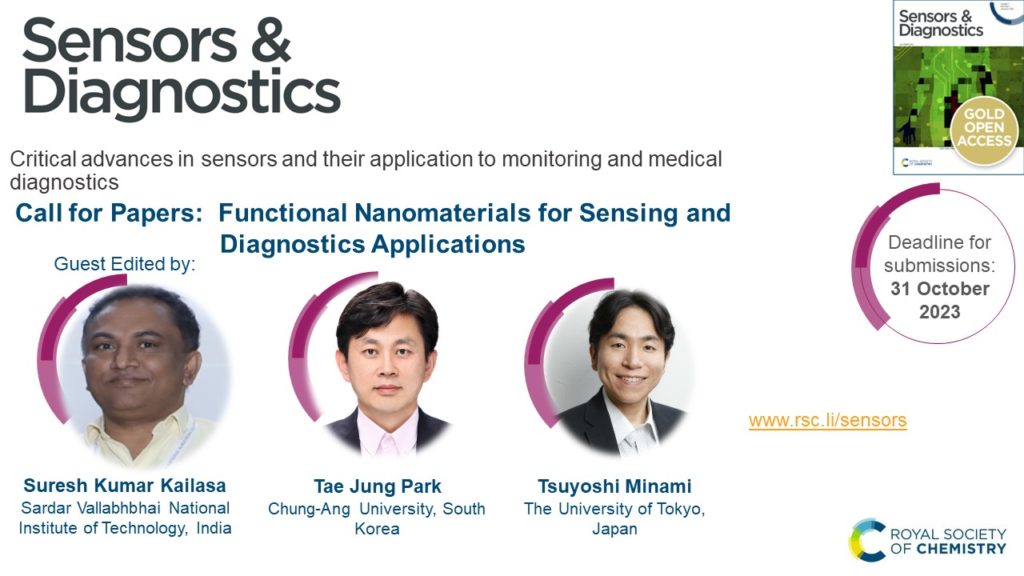

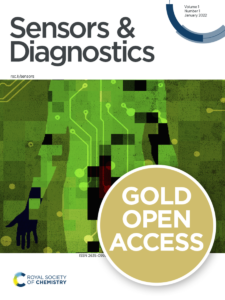 Sensors and Diagnostics is open for submissions. Find out more on the
Sensors and Diagnostics is open for submissions. Find out more on the 











